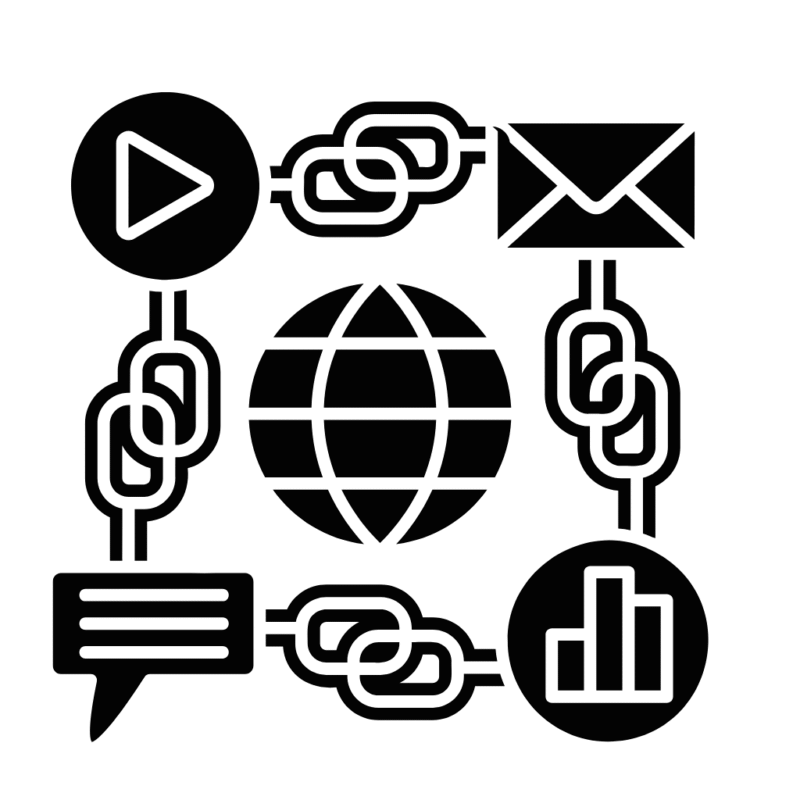In the ever-evolving world of SEO, backlink building remains a key factor in boosting your site's search engine rankings. But with the constant changes in Google's algorithms, you might be wondering: how many backlinks per day can you safely build without risking penalties? The truth is, there's no one-size-fits-all answer, but there are clear guidelines that can help you create a balanced and sustainable backlink strategy.
Building backlinks the right way in 2025 means focusing on quality over quantity. Google rewards natural, steady growth in your link profile. So, how can you strike the right balance? This guide will explore safe backlink practices, helping you stay within the safe zone and achieve long-term SEO success.
Understanding Safe Backlink Building
What Are Backlinks?
Backlinks are simply links from other websites that point to your site. In the SEO world, they are one of the most important ranking factors. Search engines, like Google, view backlinks as a vote of confidence in your content. When another site links to yours, it's like a recommendation, suggesting that your content is valuable and relevant. The more quality backlinks you have, the more authority search engines attribute to your site. However, not all backlinks are created equal, and the quality of those links matters just as much as the quantity.
The Role of Backlinks in SEO
Backlinks play a significant role in boosting your site's authority and rankings in search engine results pages (SERPs). When a high-authority website links to your content, it signals to search engines that your site is trustworthy and worth ranking. This, in turn, can help improve your site's visibility in search results, driving more organic traffic. But it's not just about the quantity of backlinks you have; the relevance and quality of the websites linking to you are just as important. A few high-quality backlinks from reputable sites can have a far more positive impact on your rankings than dozens of low-quality links.
Why Safe Backlink Building Matters
While backlinks are crucial for SEO success, it's essential to build them safely. Engaging in unsafe backlink practices, such as purchasing links or participating in link farms, can result in penalties from Google. These penalties can range from a drop in your site's rankings to complete deindexing from search results. Safe backlink building is about taking a gradual, organic approach—creating valuable content that naturally attracts backlinks. Avoiding shortcuts and focusing on quality links from reputable sources will help you maintain a strong, penalty-free backlink profile that supports long-term SEO growth.
How Many Backlinks Per Day Is Safe?
2025 Guidelines on Backlink Rate
Building backlinks is still a key part of SEO in 2025, but how many can you safely build per day without running into trouble? Well, there's no one-size-fits-all answer, but here's a good rule of thumb: for most sites, aiming for 5 to 10 backlinks per day is a safe range. If your website is brand new, it's a good idea to start small—maybe 1 to 3 quality backlinks per day. This helps your site grow naturally without looking suspicious to Google's algorithms. As your site gains authority and trust, you can increase your daily backlink count, but always keep an eye on the quality of those links.
So, what do you think? How many backlinks do you think your site should be building per day for safe and steady growth?
Best Practices for Steady Growth
It's all about balance. Rather than going for a big push of backlinks all at once, focus on consistent, gradual growth. Building backlinks too quickly can look unnatural, and that's something Google doesn't like. Instead, aim for a steady pace, focusing on quality links from reputable, relevant sites. Guest posts, partnerships, and getting links from trustworthy resources are all great ways to build a strong, healthy backlink profile. A steady and organic approach will help keep your rankings strong and steady, with no worries about penalties down the road.
How Many Backlinks Do I Need to Rank?
The Importance of Link Quality Over Quantity
When it comes to SEO, the quality of backlinks is far more critical than the number you have. A few high-quality backlinks from trusted, relevant websites can significantly boost your SEO ranking. At the same time, hundreds of low-quality links can hurt your site's credibility. Google values links from authoritative sources that are relevant to your niche, so focus on getting those over mass link-building strategies. A backlink from a high-authority site in your field sends a powerful signal to search engines, making it much more valuable than several links from less reputable sites.
To assess the quality of a backlink, consider factors like the domain authority of the linking site, its relevance to your niche, and whether the link appears natural. How do you typically assess the quality of the backlinks you're getting for your site?
Factors Affecting the Number of Backlinks Needed
The number of backlinks required to rank depends on a few key factors: competition, content relevance, and your site's authority. In highly competitive fields, you'll need more backlinks to stand out. For example, if your niche is crowded with well-established sites, you'll have to work harder to build a stronger backlink profile. On the other hand, if your content is niche-focused or unique, fewer backlinks might be enough to rank high. Your site's age and authority also matter—new websites typically need more backlinks to gain visibility compared to established ones with an existing strong backlink profile.
In the end, it's not just about the number of backlinks but how strategically you earn them. The right balance of quality links from relevant, high-authority sites will set you on the path to higher rankings.
Risks of Building Too Many Backlinks Too Quickly
Google Penalties: What Can Go Wrong
Building backlinks too quickly can be risky and may lead to severe consequences for your SEO efforts. Google's algorithm is designed to detect unnatural link patterns, and a sudden spike in backlinks could raise red flags. If Google detects an unnatural increase, it could result in SEO penalties, like a significant drop in your rankings or even having your site deindexed. This would remove your site from search results, undoing much of your hard work.
Short-Term Spikes vs. Long-Term Growth
It might seem tempting to boost your rankings fast with a flood of backlinks, but this short-term spike often backfires. Instead, focus on gradual, organic backlink growth. A steady, consistent approach looks more natural to Google and helps build your site's authority over time. This reduces the risk of penalties and supports sustainable SEO success.
Have you ever tried to build backlinks quickly? How did it impact your site's SEO in the long run?
By prioritizing quality over quantity and growing backlinks at a steady pace, you protect your site from penalties and set yourself up for lasting SEO success.
Getting Too Many Backlinks on a New Website: What You Should Know
When you're working with a new website, it's crucial to be cautious about how many backlinks you build early on. If you try to get too many backlinks too quickly, it can look unnatural to Google. For a new site, search engines expect a more gradual increase in backlinks, not a sudden spike. If Google detects this, your site could be penalized, drop in rankings, or even be deindexed. This can undo all your hard work, so it's essential to pace your backlink efforts carefully.
A safer approach for new websites is to start small and build backlinks steadily. Focus on getting a few high-quality backlinks from relevant, authoritative sites in your industry. You can do this through guest posts, outreach to other site owners, or getting listed on trusted directories. The idea is to build backlinks naturally over time, making your site look credible and trustworthy to search engines. If you're managing a new website, it's best to focus on building those links gradually and avoid overloading your site with backlinks all at once. Have you been following a similar strategy for your site? How are you pacing your backlink building to keep it safe and effective?
Effective Strategies for Safe Backlink Building
A diverse backlink profile is essential for SEO success. Relying on just one type of backlink, such as guest posts, can limit your site's potential for growth. To create a strong, natural-looking backlink profile, aim for variety. This includes acquiring links from different sources, like guest posts, resource pages, blog comments and mentions from authoritative sites in your niche. A mix of backlinks shows Google that your site is credible and relevant across multiple platforms, reducing the risk of penalties.
To acquire backlinks safely, focus on building meaningful relationships with other site owners and contributing valuable content. Guest posting is a great way to earn quality backlinks while providing value to other sites. Reaching out to influencers or sites with complementary content can also be an effective strategy for obtaining relevant links. This relationship-first approach helps ensure that the backlinks you earn come from trustworthy sources and are contextually relevant to your niche.
If you're working on your backlink strategy, it's a good idea to diversify your efforts. Have you considered guest posting or collaborating with other websites in your industry? By spreading out your efforts across various link acquisition methods, you can build a more robust and penalty-proof backlink profile that drives long-term SEO success.
Key Takeaways for Building Backlinks Safely
Building backlinks safely revolves around moderation, quality, and steady growth. It's crucial to focus on acquiring high-quality backlinks rather than aiming for a large volume. A consistent pace in backlink building will look natural to search engines and help avoid penalties. Google values organic growth, so by diversifying your sources, such as guest posts, resource links, and authoritative mentions, you create a more trustworthy backlink profile.
Avoid shortcuts like buying links or using spammy tactics. These quick fixes might provide temporary boosts, but they can damage your SEO in the long run. Instead, prioritize safe backlink-building methods, focusing on building relationships, providing valuable content, and earning links naturally. This approach ensures a stronger, more sustainable backlink profile.
As you refine your backlink strategy for 2025, consider if your current approach emphasizes link quality and gradual growth. Are you diversifying your link sources or relying too heavily on one method? By focusing on these principles, you can build a strong, penalty-free backlink profile that will support your long-term SEO goals.
Frequently Asked Questions (FAQs)
There's no one-size-fits-all answer, but aiming for 5 to 10 backlinks per day is generally safe for most sites. For new websites, start with 1 to 3 backlinks per day and gradually increase as your site gains authority. Focus on quality over quantity to avoid any potential penalties from Google.
Building backlinks too quickly can appear unnatural to search engines, potentially leading to penalties. It's best to pace your backlink acquisition gradually, with steady growth over time. Aim for a consistent and natural link-building rate to maintain a safe profile without risking Google's penalties.
To ensure your backlinks are high-quality, focus on acquiring links from authoritative, relevant sites in your niche. Look for websites with strong domain authority and avoid low-quality or spammy sources. Natural, contextually relevant backlinks from trusted websites will always offer the best SEO value.
Yes, fewer backlinks from high-authority sites can be more valuable than many from low-authority sites. A high-quality link from a reputable source is seen as a more decisive vote of confidence by Google, which can improve your rankings much more effectively than numerous lower-quality links.




